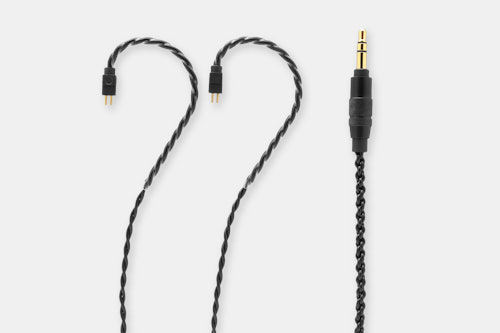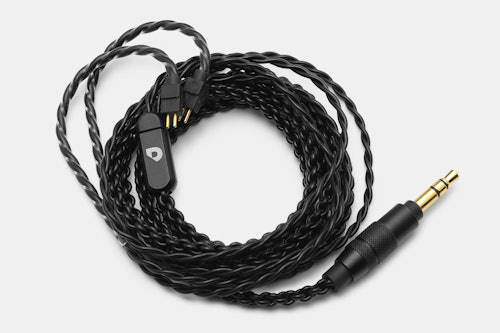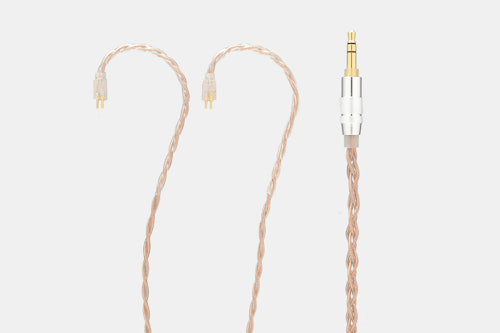Click to view our Accessibility Statement or contact us with accessibility-related questions$40$40


 VIEW 1 MORE
VIEW 1 MORE
 VIEW 3 MORE
VIEW 3 MORE
Drop 2-Pin IEM Cables
$19
Drop 2-Pin IEM Cables
bookmark_border
$19
2.2k Sold
·
Ready to Ship
·
Free Returns in USA
●
Members who purchase earn
57
Drop Rewards
Want to know something about this product or how to use it?
Ask the community!
Ask the community!
Sort by: Newest
keyboard_arrow_down
SuperFlyEDSguy
62
Nov 18, 2023
As the IEM cable is passive it would be measured in resistance or the inverse of simple DC conductivity. Impedance on the other hand measures the inverse of AC conductivity and is used in audio since audio is based on waves, which is essentially AC by definition. As a simple IEM cable is a standalone item until put into an audio chain we could see how resistive it is with a basic multimeter. You should find that the standard cable is approximately 1Ω and the premium cable is about 0.3Ω. These may be several percent off due to manufacturing constraints, but I’d think that they would yield no more than about a 10% tolerance. Both of these values are VERY good as they will be extremely conductive!
Now, I mentioned that resistance is used when measuring a DC circuit, and impedeance is used when measuring an AC circuit. This is due to the fact that aside from the natural resistance of the components in an AC circuit, you will also have to account for reactance which is how much the capacitance or inductance is effecting the resistance as well as how it effects the phase of the waves, e.g. making it lead or lag. Surprisingly, if you’d really like to test for the impedeance of an IEM cable, you could do it, yes, you read me right that it could be done… but how?!
First, I would venture to say that resistance provides a more than suitable indication for how a cable should perform, but being that there are twists and multiple wires involved, I’m quite certain that you will see a slightly different impedeance value as the items I just pointed out will have some reactance, albeit probably very little. The way you would test a cable for impedeance cannot be done with a regular multimeter, you would need to use a specialized tester called an LCR Tester. I personally use a DER EE DE-5000 unit and without getting any more complex you basically hook it up to the cable, but you will set a frequency value to conduct the test at, the industry standard is 1kHz. Actually, if you hook a pair of headphones to a LCR Tester, you would actually hear the tone when checking the impedeance! I tried this with my Tin HiFi T2 Pro IEMs and it returned an impedeance value of exactly 16Ω, just as it should when tested at 1kHz! BTW, hearing the frequency noise through the IEMs was really cool to see it all in action! Similarly, you could test pretty much anything for impedeance with an LCR meter, and you could do it at other frequencies, but like I said, 1kHz is the baseline in audio. Likewise, you could test for, and get very accurate inductance and capacitance results, so my DE-5000 is my “go to” device when I want to find a capacitor with the best tolerance out of a bag of several pieces. It’s simply far more accurate than a multimeter though I do have several of those that I use regularly with my Fluke and Brymen being my “go to” meters. I use those for finding resistance values, but it may surprise you that simple continuity is the number one thing that I grab a multimeter for!
Finally, as stated by others, the frequency response is not a characteristic of the wires, rather it is of the speakers when dealing with headphones or IEMs. Generally, most speakers will fall within 10Hz to 20Hz on the low end on upto 20kHz on the high end. This is to ensure that it covers the gamut of human hearing that an adult human falls well within this range. Actually, as we age, that top number gets lower and lower for us! We can perceive higher frequencies, but that’s another whole complex topic, but the point that I am getting at is that HD audio pushes those extremes well beyond a cap of 20kHz! There’s a whole study to this called psychoacoustics that discusses how our brains react to all sounds, even those we technically cannot hear, but may perceive the vibrations of and the like! BTW, headphones or IEMs with multiple drivers will split this range up using crossover circuits to allow the most capable speaker in the range to operate exclusively within the desired frequency range! This is why some IEMs with multiple drivers just sound soooooo good!
I know this all was a bit technical, but you need to understand these concepts to truly answer your question, and one that you could appreciate as you will carry this knowledge with you on your audio journey. I certainly hope this helped!

3ogus
17
Dec 7, 2023
SuperFlyEDSguyI'm not entirely sure what I just read, but I love it. Thank you for the summary :)

SuperFlyEDSguy
62
Dec 8, 2023
3ogusNo, thank you! And, you’re quite welcome! 👌
In retrospect, I think that I may have gotten a bit over-zealous with that reply, but I’m glad that you found it interesting! Besides, I must have showed some self-control as I didn’t get into the math behind the Complex Impedance Plane! 😆
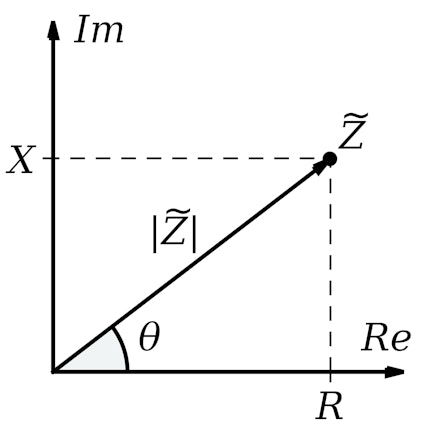

Axelay2003
9
Sep 3, 2021
Received mine today. It does not denote which is Right or Left. There is a red dot and a blue on the other. Can anyone help clarify?

iAmBoomerStrong
479
Mar 7, 2021
When you go further down on the same page and touch on the “Details” section of the item it says that the 2.5mm gold cable is balanced. Also TRS and TRRS are the difference between a single ring post plug and a double ring post plug on your headphone cord (see attached photos). It stands for TIP-RING-RING- SLEEVE. The double ring post plug became popular in 2006 and is mainly used on stereo headphone cords that also have with a built in microphone. It allows you to hear things in stereo while also being able to communicate. The headphones you received with your smartphone is what’s considered to be a 3.5mm TRRS Cord. A 2.5mm TRRS is exactly the same except it has a thinner tip on the plug.
Hope this helps, happy listening.
Boomer 🐼 🎧
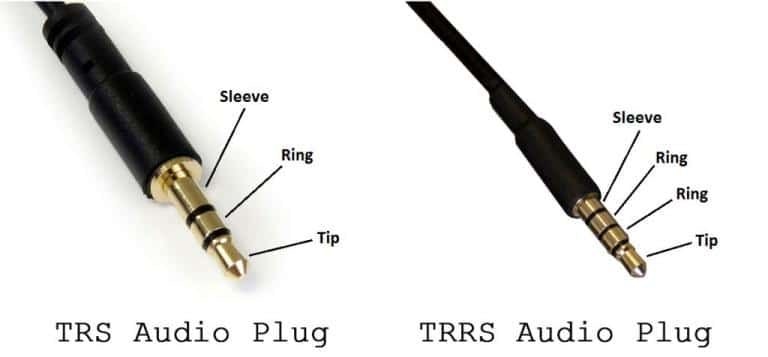
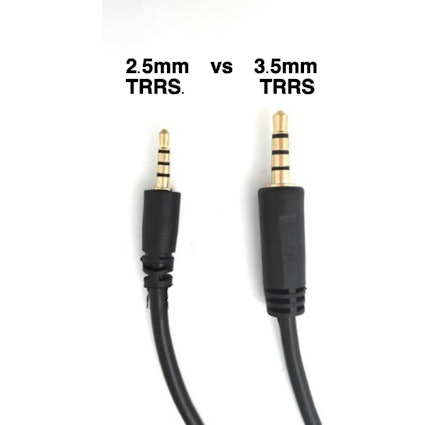



Evshrug
4130
Keyboard Club Member
Dec 7, 2023
No, different kind of pins for IEMs (in-ear monitors) and the HD 600 – series plus the HD 58X Jubilee. The good news, however, is that any HD 650/600/660S/660S2 cable will also be compatible with the HD 58X Jubilee; I like to use the Jubilee’s short cable with my HD 660S so I don’t get cables tangled at my computer!
